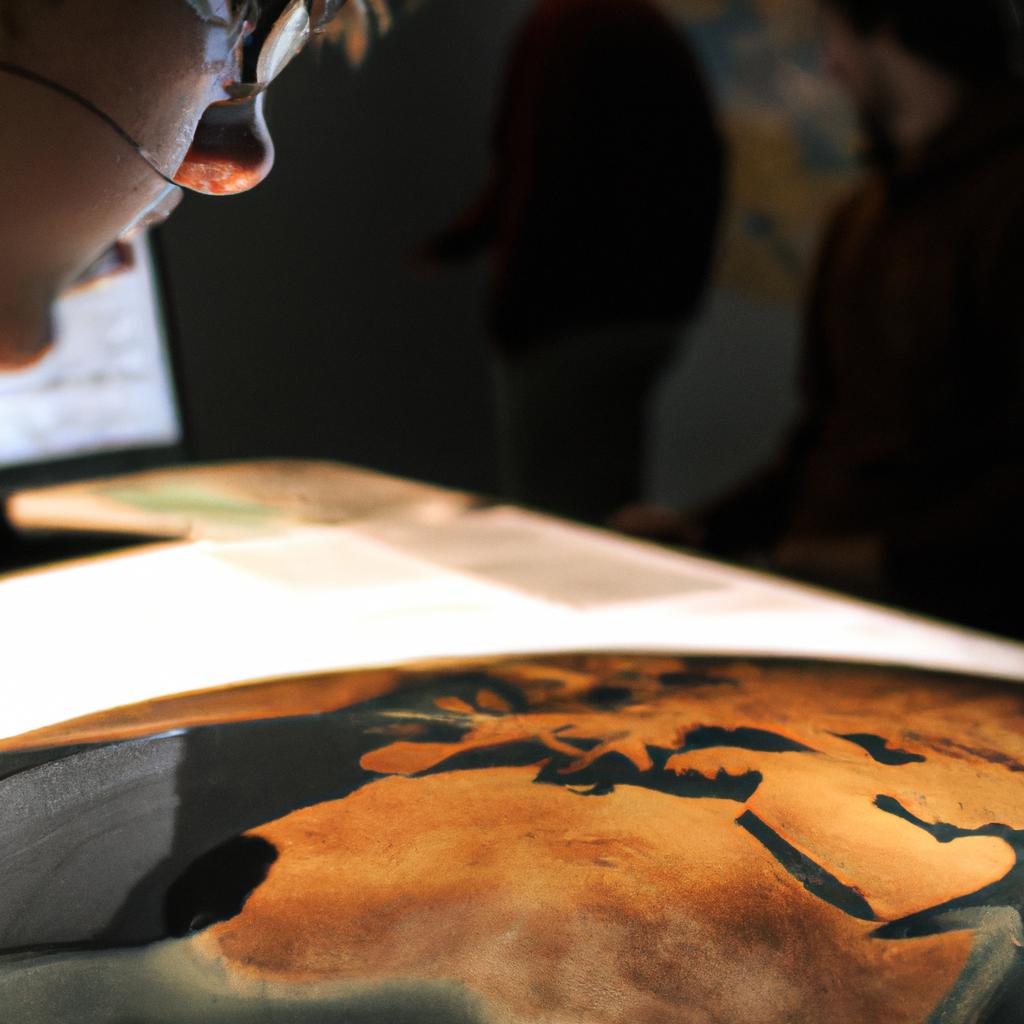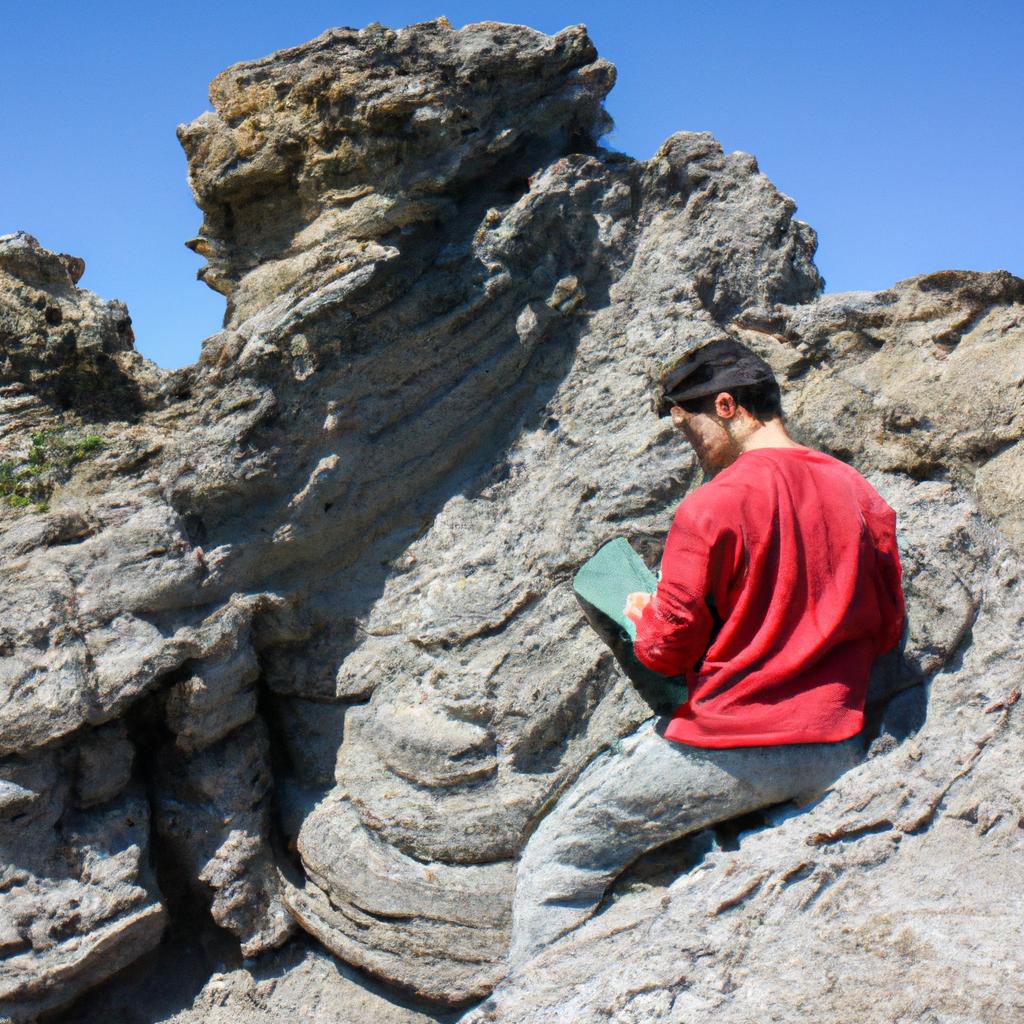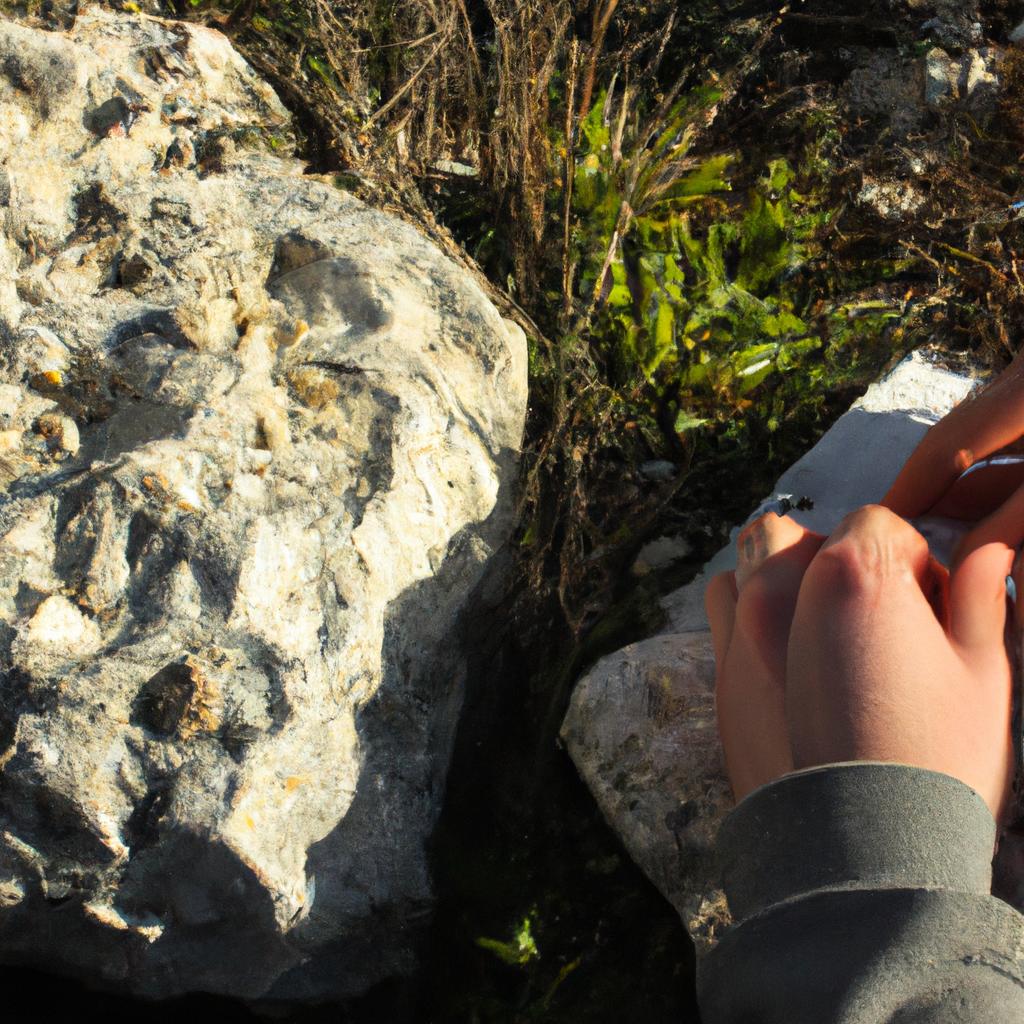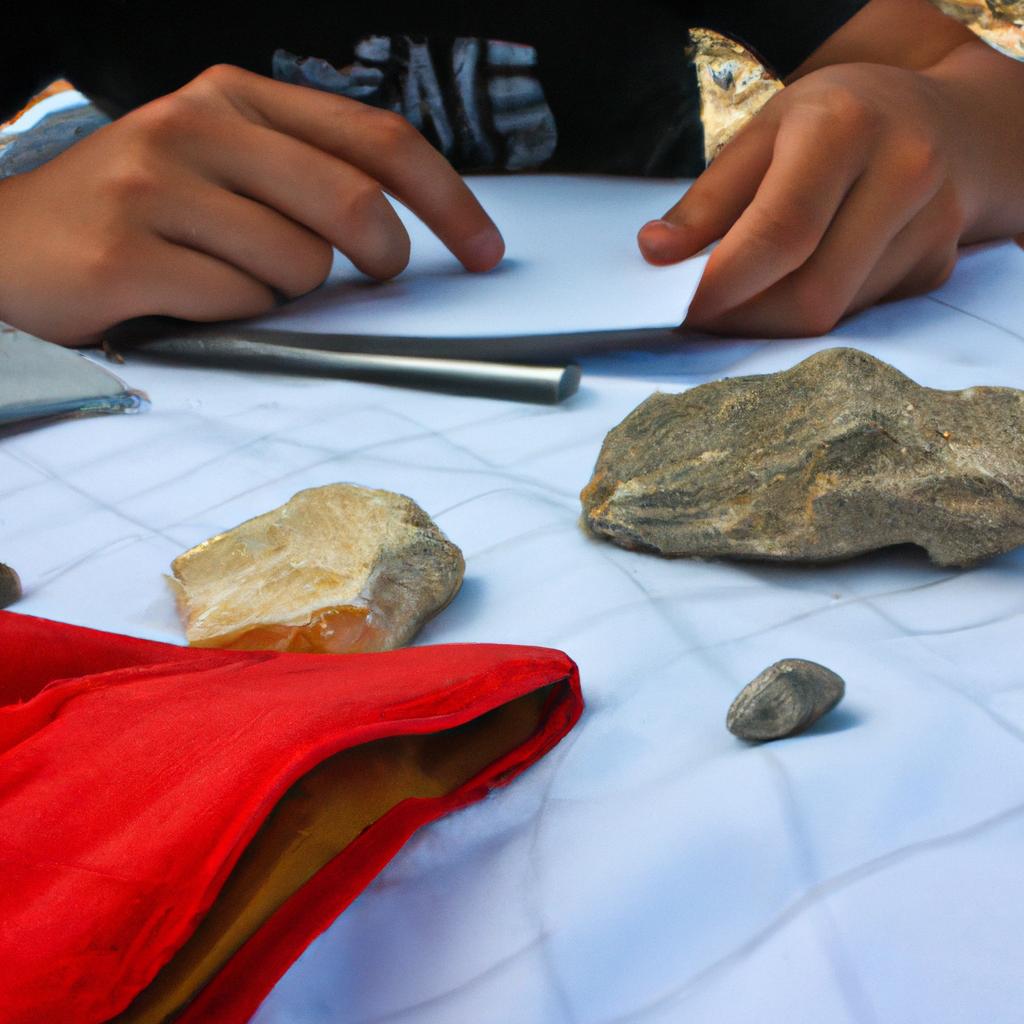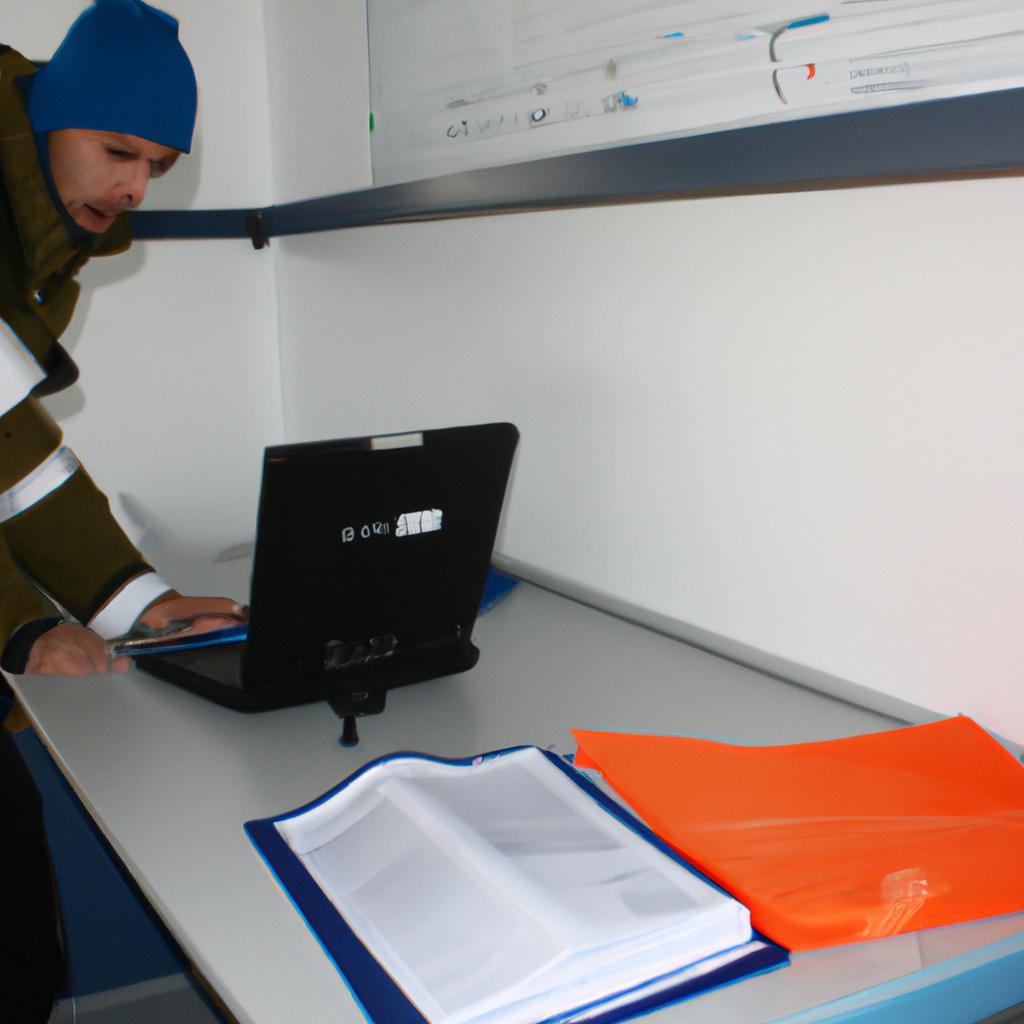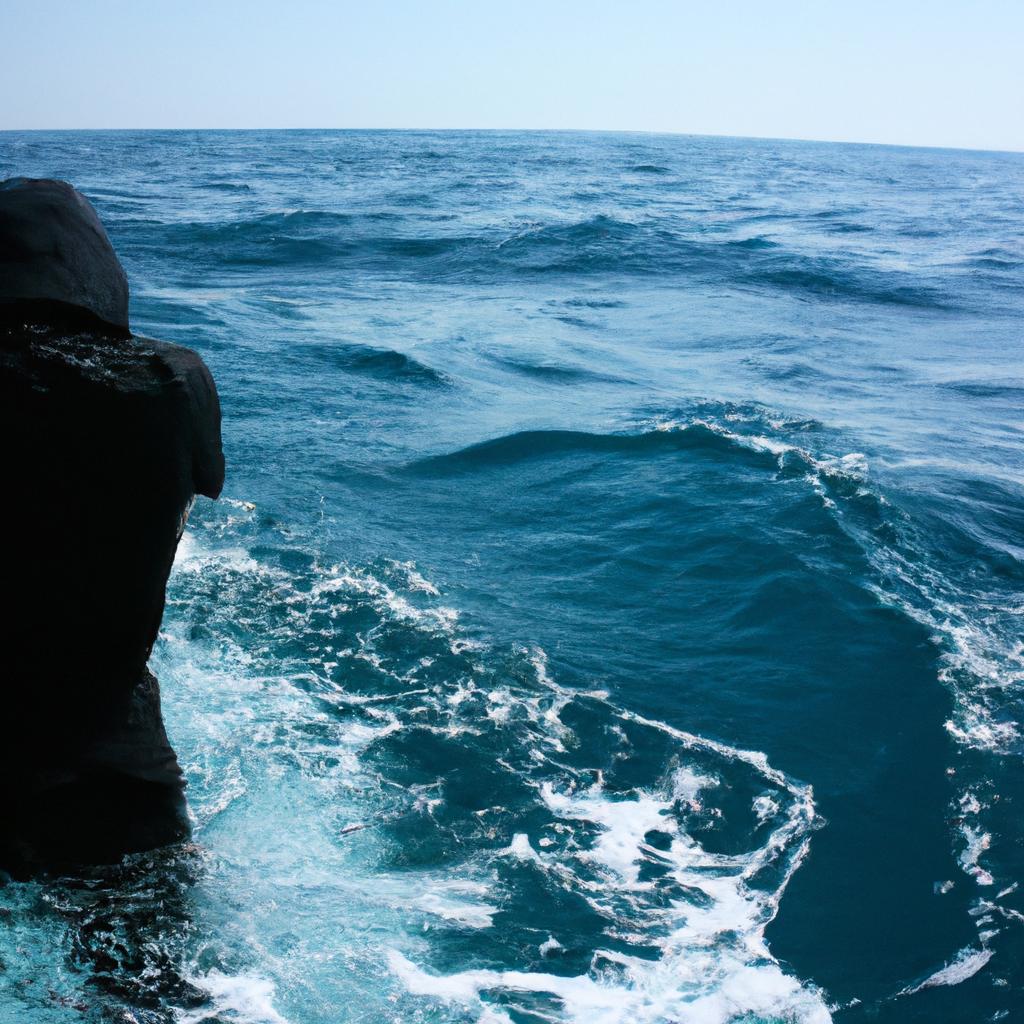Plate tectonics is an essential concept in the field of geology, offering a framework for understanding Earth’s dynamic nature. The theory proposes that the Earth’s lithosphere, comprised of several rigid plates, is constantly moving and interacting with one another at their boundaries. This movement leads to various geological phenomena such as earthquakes, volcanic activity, and the formation of mountain ranges. For instance, the devastating 2011 earthquake off the coast of Japan serves as a compelling example of how plate tectonics can profoundly impact our planet.
Understanding plate tectonics requires delving into its underlying principles. First proposed by Alfred Wegener in 1912 through his continental drift hypothesis, our knowledge has significantly progressed since then due to advancements in technology and scientific research. Through rigorous study using techniques like satellite imagery, seismology, and GPS measurements, scientists have been able to gather considerable evidence supporting this theory. By analyzing seismic waves produced during earthquakes or measuring minute movements between different points on Earth’s surface over time, researchers have provided concrete proof that supports the existence of these mobile plates. Consequently, plate tectonics has become widely accepted among the scientific community as a fundamental principle explaining Earth’s ever-changing geography and natural processes.
Formation of Earth’s crust
Imagine a vast ocean, where the seafloor spreads apart and molten rock rises to the surface. This process, known as seafloor spreading, is one of the key mechanisms responsible for the formation of Earth’s crust. The movement and interaction of tectonic plates play a fundamental role in shaping our planet’s dynamic geology.
Firstly, it is important to understand that Earth’s crust is divided into several large pieces called tectonic plates. These plates float on top of the semi-fluid asthenosphere beneath them. Seafloor spreading occurs at boundaries between these plates, specifically at divergent plate boundaries, where two plates move away from each other. As they separate, magma wells up from below and solidifies into new oceanic crust. A classic example of this phenomenon can be observed along the Mid-Atlantic Ridge, stretching across the Atlantic Ocean.
To comprehend the significance of seafloor spreading and its impact on Earth’s geology, consider the following bullet points:
- Continuous Renewal: Seafloor spreading ensures a constant renewal of Earth’s crust by creating new material while simultaneously recycling older portions.
- Ocean Basin Formation: Through this process, vast ocean basins are formed over millions of years as new crust is generated at mid-ocean ridges.
- Geological Activity: Seafloor spreading contributes significantly to geological activity such as earthquakes and volcanic eruptions due to the intense forces involved in plate movements.
- Magnetic Anomalies: Magnetic anomalies recorded within rocks provide evidence supporting seafloor spreading theory and help unravel the history of past plate movements.
Furthermore, examining a three-column table outlining different characteristics associated with seafloor spreading can evoke an emotional response among readers:
| Characteristics | Importance | Implications |
|---|---|---|
| Creation of New Crust | Fundamental | Ensures the continuous renewal of Earth’s surface |
| Geological Activity | Significant | Contributes to natural hazards and landform creation |
| Magnetic Anomalies | Evidentiary | Provides crucial evidence for plate tectonic theory |
In conclusion, seafloor spreading plays a pivotal role in the formation of Earth’s crust. It acts as a mechanism through which new oceanic crust is generated, contributing to the dynamic nature of our planet. This understanding sets the stage for further exploration into another significant aspect of plate tectonics: continental drift theory.
Now let us delve deeper into the concept of continental drift theory and its implications on Earth’s geological history.
Continental drift theory
Plate Tectonics: Earth’s Dynamic Geology
Formation of Earth’s Crust
However, it is important to understand that this movement is just one aspect of a larger phenomenon known as plate tectonics. Plate tectonics refers to the scientific theory that explains the structure and dynamics of the Earth’s lithosphere, which is composed of several large plates that float on top of the semi-fluid asthenosphere beneath them.
To illustrate the concept further, let us consider an example. Imagine two massive puzzle pieces floating side by side on water. Over millions of years, these pieces may start drifting apart or colliding with each other due to various forces acting upon them. Similarly, the Earth’s crust consists of numerous interlocking plates that constantly move relative to one another.
Understanding plate tectonics requires acknowledging several key points:
- Plates are not uniform in size or shape; they can be continental or oceanic.
- The boundaries between plates are dynamic areas where interactions occur.
- Three main types of boundaries exist: divergent (plates moving away from each other), convergent (plates colliding), and transform (plates sliding past each other).
- These processes result in geological phenomena such as earthquakes, volcanic activity, mountain formation, and the creation of new crust through seafloor spreading.
Consider the following table showcasing some significant features associated with different types of plate boundaries:
| Type | Description | Example Feature |
|---|---|---|
| Divergent | Plates moving apart | Mid-Atlantic Ridge |
| Convergent | Plates colliding | Andes Mountain Range |
| Transform | Plates sliding past each other | San Andreas Fault |
The intricate dance between these plates creates a continuously evolving planet, shaping its landscapes and impacting life on Earth. By studying plate tectonics, scientists gain a deeper understanding of the processes that have sculpted our planet over billions of years.
In the subsequent section about “Evidence of plate tectonics,” we will explore the scientific evidence supporting this theory and delve into further details regarding the fascinating dynamics behind Earth’s geological activity.
Now let us move forward to investigate the compelling evidence for plate tectonics.
Evidence of plate tectonics
Plate Tectonics: Earth’s Dynamic Geology
This groundbreaking theory proposed that Earth’s continents were once part of a single supercontinent called Pangaea and have since drifted apart over time. Now, we delve into the compelling evidence that supports this theory and sheds light on the dynamic nature of our planet’s geology.
One notable example supporting plate tectonics is the case of the Mid-Atlantic Ridge. Stretching across the Atlantic Ocean, this underwater mountain range acts as a seam where new oceanic crust is formed through volcanic activity. As magma wells up from beneath the Earth’s surface, it solidifies to create fresh rock material. Over millions of years, this process has led to the gradual separation of North America and Europe-Africa along their eastern coastlines, forming what is known as a divergent boundary.
To further substantiate the concept of plate tectonics, several lines of evidence have been observed:
- Paleomagnetism: The study of ancient magnetic fields preserved in rocks reveals patterns consistent with continental drift and seafloor spreading.
- Seismic Activity: Earthquakes occur predominantly along plate boundaries due to intense geological forces and provide insight into these regions’ dynamic nature.
- Volcanic Hotspots: Chains of volcanic islands such as Hawaii are thought to form above stationary plumes of molten material rising from deep within Earth’s mantle.
- Fossil Distribution: Similar fossils found on different continents separated by vast oceans indicate past connections when those lands were united.
These pieces of evidence collectively paint a vivid picture of our ever-changing planet driven by immense forces operating beneath its surface.
| Evidence | Description |
|---|---|
| Paleomagnetism | Ancient magnetic field patterns reveal movement |
| Seismic Activity | Earthquakes concentrated along plate boundaries |
| Volcanic Hotspots | Chains of volcanic islands above stationary plumes |
| Fossil Distribution | Similar fossils on separate continents |
Understanding the mechanics behind plate tectonics is crucial for comprehending Earth’s geological processes. In the subsequent section, we will explore the different types of plate boundaries and their distinct characteristics. By examining these interactions between plates, we can gain a deeper understanding of how our planet continues to evolve.
Types of plate boundaries
Plate Tectonics: Earth’s Dynamic Geology
Evidence of plate tectonics has provided compelling support for the theory that Earth’s lithosphere is broken into plates which move and interact with one another. This dynamic process gives rise to various geological phenomena, shaping our planet over millions of years. In understanding the types of plate boundaries, we can gain further insight into the forces at work beneath the Earth’s surface.
At divergent plate boundaries, such as the Mid-Atlantic Ridge, two plates are moving apart from each other. Magma rises up through the gap, creating new crust and causing seafloor spreading. This process not only provides evidence for continental drift but also contributes to the formation of oceanic basins and volcanic activity along these rift zones.
Conversely, at convergent plate boundaries like the Andes Mountains in South America, two plates collide or come together. One subducts beneath the other due to differences in density. Subduction leads to intense geological activity including earthquakes, volcanic eruptions, and mountain building. The collision between India and Eurasia that formed the Himalayas exemplifies this type of boundary.
Transform plate boundaries involve horizontal sliding past one another without any significant creation or destruction of lithosphere. An example is California’s San Andreas Fault where the Pacific Plate moves northwestward relative to the North American Plate. Transform boundaries often result in powerful earthquakes due to accumulated stress along fault lines.
The consequences of plate movement are far-reaching and impact both humans and ecosystems alike. They include:
- Volcanic eruptions that release ash and gases into the atmosphere
- Formation of mountains and mountain ranges affecting local climate patterns
- Creation of deep ocean trenches where large earthquakes occur
- Continental drift leading to changes in landmass configurations impacting global climates
These effects highlight how interconnected our planet’s systems are and emphasize why studying plate tectonics is crucial for predicting natural hazards and preserving our environment.
Consequences of plate movement
Plate Tectonics: Earth’s Dynamic Geology
Now, let us delve deeper into the consequences brought about by these plate movements.
One example that highlights the impact of plate tectonics is the Pacific Ring of Fire. This region encircles the Pacific Ocean and is notorious for its frequent seismic activity and volcanic eruptions. The convergence between the Pacific Plate and various other plates along this boundary has resulted in numerous devastating earthquakes, such as the 2011 Tohoku earthquake in Japan. Additionally, it has given rise to a multitude of active volcanoes like Mount Pinatubo in the Philippines. These events exemplify how plate boundaries can shape landscapes dramatically and pose significant challenges for human populations residing nearby.
The consequences of plate movement are far-reaching and extend beyond geological ramifications. From an environmental perspective, they can lead to alterations in climate patterns due to changes in oceanic currents caused by shifting land masses. Furthermore, they have profound implications on ecosystems, including habitat fragmentation or emergence of new habitats following volcanic eruptions or formation of mountain ranges.
This interconnectedness extends even further when considering societal impacts. Human settlements located near plate boundaries often face increased vulnerability to natural disasters such as earthquakes and tsunamis. Economic losses arising from infrastructure damage can be substantial, affecting not only local communities but also global trade networks dependent on affected regions for resources or manufacturing capabilities.
To comprehend fully the role played by plate tectonics in shaping our planet, it is essential to understand both their physical manifestations and wider-ranging effects on Earth’s systems. In examining the subsequent section regarding “Role of plate tectonics in shaping the Earth,” we will explore additional aspects that contribute to our understanding of this dynamic process.
Emotional Response Bullet Points
- Disruption: Devastating earthquakes uproot lives and disrupt communities, leaving behind a trail of destruction.
- Vulnerability: Human settlements near plate boundaries face heightened vulnerability to natural disasters with severe consequences for individuals and societies.
- Environmental Impact: Plate movements alter ecosystems, fragment habitats, and influence climate patterns on a global scale.
- Economic Consequences: Infrastructure damage leads to substantial economic losses that impact local communities and global trade networks.
Emotional Response Table
| Earthquake Magnitude | Destruction Level | Tsunami Potential |
|---|---|---|
| 4.0 – 4.9 | Minimal | Low |
| 5.0 – 5.9 | Minor | Moderate |
| 6.0 – 6.9 | Significant | High |
| 7.0 or greater | Catastrophic | Very high |
As we move forward into the next section exploring the role of plate tectonics in shaping the Earth, let us delve into how these phenomena affect geological processes at large without losing sight of their broader implications on our planet’s interconnected systems.
Role of plate tectonics in shaping the Earth
The Role of Plate Tectonics in Shaping the Earth
Having explored the consequences of plate movement, we now shift our focus to understanding the crucial role that plate tectonics plays in shaping the Earth’s dynamic geology. One compelling example is the formation and evolution of mountain ranges, such as the Himalayas.
Mountain building occurs when two continental plates converge, leading to a collision. The Indian subcontinent slowly moved northward over millions of years until it collided with the Eurasian plate. This intense compression caused the crust to buckle and fold, resulting in the towering peaks we see today in the Himalayas. The process continues even now, as these mountains are still gradually rising due to ongoing tectonic forces.
Plate tectonics influences various geological phenomena worldwide through its intricate interactions. Let us consider some key aspects:
- Volcanic Activity: Convergent boundaries where oceanic and continental plates collide often give rise to volcanic activity. As one plate sinks beneath another (subduction), molten rock from deep within Earth’s mantle can reach closer to the surface, creating explosive volcanoes.
- Earthquakes: Transform boundaries, where two plates slide past each other horizontally, can cause significant seismic events. Stress along fault lines builds up over time before being released suddenly during an earthquake.
- Ocean Basin Formation: Divergent boundaries occur where plates move apart, allowing magma to well up and create new oceanic crust on the seafloor. These regions play a vital role in expanding Earth’s oceans.
- Continental Drift: Over vast timescales, continents have undergone dramatic movements due to plate tectonics. This drifting has shaped global climate patterns by influencing ocean currents and affecting habitats for both terrestrial and marine life.
To further illustrate how plate tectonics shapes our planet’s topography, consider this table outlining notable features formed at different types of plate boundaries:
| Plate Boundary | Notable Features |
|---|---|
| Divergent | Mid-Ocean Ridges and Rift Valleys |
| Convergent | Volcanic Arcs, Mountain Ranges |
| Transform | Fault Lines, Earthquake Zones |
This table provides a snapshot of the diverse geological features associated with each boundary type. It highlights the dynamic nature of our planet brought about by plate tectonics.
In summary, plate tectonics is an integral process responsible for shaping Earth’s geology. From the formation of majestic mountain ranges like the Himalayas to volcanic activity, earthquakes, and continental drift, its influence is far-reaching. Understanding these mechanisms not only deepens our knowledge of Earth but also helps us comprehend how various natural phenomena have shaped our world throughout history.

